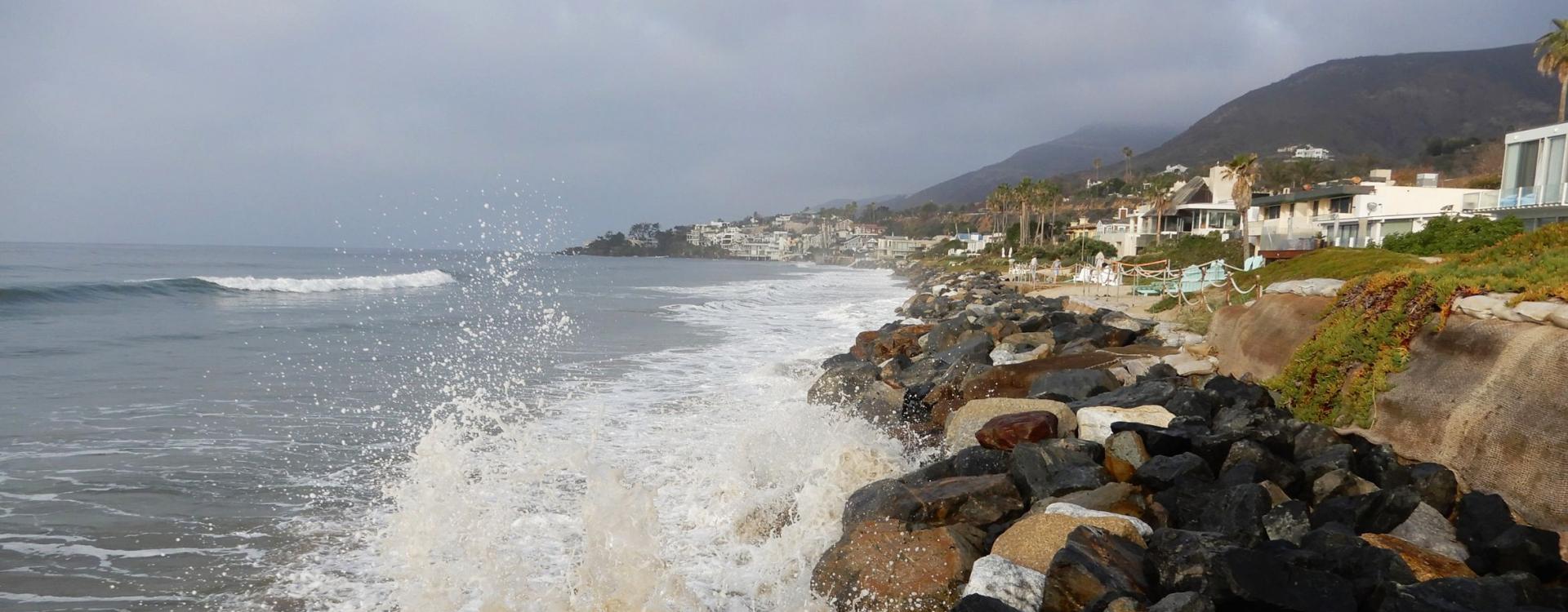
The ocean is advancing on California, and we need to determine how we will respond. Photo Credit: Charles Lester
A brief stroll along the Santa Barbara seashore leaves no doubt that our beaches are in peril. Stronger storms, bluff erosion and sea-level rise all threaten our coast. Without intervention, two thirds of Southern California’s beaches will be inundated by 2100, according to the U.S. Geological Survey. But rather than merely reacting to what the ocean throws at us, the state of California has commissioned a strategic plan to prepare for the future.
“In California, the beaches have long been understood as an important part of our way of life,” said Charles Lester, director of UC Santa Barbara’s Ocean & Coastal Policy Center. “But climate change and sea-level rise are bringing tremendous changes to our shoreline.”
Lester is leading a team of researchers from five institutions and organizations to develop the California Beach Resiliency Plan. Their work will be supported by a $2.1 million grant from the Ocean Protection Council, a state government agency tasked with safeguarding California’s coast through funding research, policy and management. The effort will produce concrete guidance for beach resiliency from the community level up to the state level covering the entire Californian coast.
This project has three components. The first consists of snapshot assessments of beaches at the county level, spanning all 20 of California’s coastal counties. This aspect will characterize beaches along different dimensions, such as their ecology, geography and social value. The second component is decision guidance: a framework for helping local communities make decisions about how to interpret all this information and which interventions to consider. The third facet encompasses state-level recommendations to inform broader strategies and actions.
The whole project will be built from the ground up.
A holistic account of the issue will require being multidisciplinary, interdisciplinary and transdisciplinary, Lester added. That’s why he’s bringing together experts from different fields.
For instance, UCSB sociology professor Summer Gray will work with local communities to understand the human aspect of coastal use and access.
Socially and legally, we’re quite invested in where the beaches were in the 20th century. But geologically speaking, beaches come and go; they change over the course of seasons, years and decades. “Sandy beaches are incredibly thin strips of constantly changing habitat,” explained Jenny Dugan, an ecologist at UCSB’s Marine Science Institute who is also on the team.
For such an iconic and valued feature of our state, the shore practically vanishes on maps.
We might be able to preserve more of our beaches if we incorporate this concept into decision making, the researchers explained. “Wherever you can give beaches room to move you have an opportunity,” Dugan said. “We want to help communities identify where these types of opportunities might be.” For instance, many of southern California’s wider, groomed beaches could support dunes that could both provide habitat and buffer against rising sea level, if allowed to form.
“The beach has always been a central and tremendously valuable part of California’s way of life,” said Lester. And the state has a long history of shepherding coastal access, ecology and economies. Back in 1972, under Governor Ronald Reagan, California created a Comprehensive Ocean Area Plan, which included a call for managing beach erosion, even raising the idea of purchasing eroding lands.
“It’s important to revisit those initial, proactive planning impulses we had,” Lester added, “so that in the next 50 years, our kids’ kids’ kids will have beaches the way we have had beaches.”